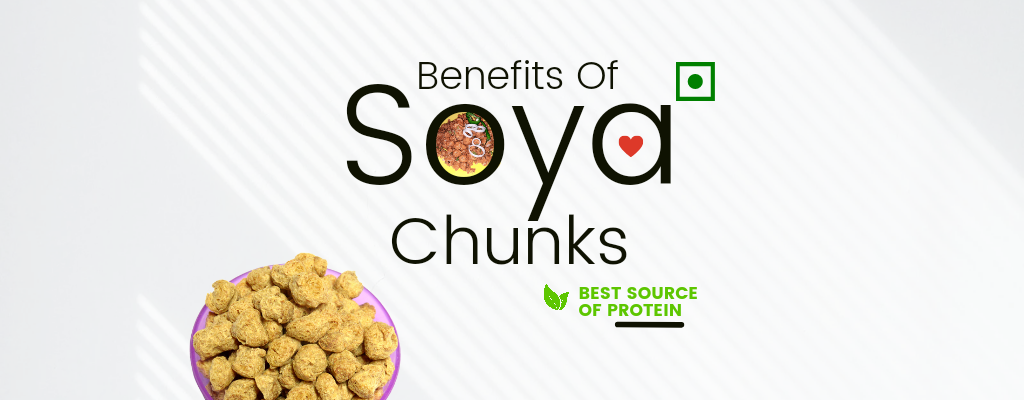
Why are Soya Chunks preferred by many health conscious individuals?
High in protein: It contains about 52 grams of protein per 100 grams. This makes them an excellent source of protein for vegetarians and vegans.
Low in fat: Soya chunks are low in fat and it contains about 1 gram of fat per 100 grams.
Rich in fibre: Soya chunks are a good source of fibre, which helps promote digestive health and can help reduce cholesterol levels.
Rich in vitamins and minerals: Soya chunks are a good source of several essential vitamins and minerals, including iron, calcium, phosphorus, and B-complex vitamins.
Versatile: Soya chunks are very versatile and can be used in a variety of dishes, such as curries, stir-fries, soups, and salads.
Affordable: Soya chunks are an affordable source of protein, making them an excellent option for people on a budget.
Overall, incorporating soya chunks into your diet can be a healthy and cost-effective way to increase your protein intake and improve your overall health.
How Soya Chunks Substitutes Non Veg?
Incorporating soya chunks into your diet as a substitute for non-vegetarian foods can provide numerous health benefits while reducing the environmental impact of meat production.
Soya chunks are a great substitute for non-vegetarian foods as they are a rich source of protein and contain all the essential amino acids needed for our body. Additionally, they are low in fat, making them an excellent choice for people who want to reduce their intake of saturated and unhealthy fats.
Soya chunks can be seasoned and flavoured to mimic the taste and texture of non-vegetarian foods, making them an excellent alternative for people who are transitioning to a vegetarian or vegan diet.
How much soya chunks should be consumed in a day?
The recommended daily intake of soy protein varies based on age, gender, and activity level. However, in general, consuming 25 grams of soy protein per day has been found to be beneficial for health.
One serving of soy chunks (about 30 grams) contains approximately 17 grams of protein. Therefore, consuming one to two servings of soy chunks per day can help you meet your daily recommended intake of soy protein.
It’s important to note that soy chunks should not be the sole source of protein in your diet.
Variety is key to ensuring that you get all the nutrients your body needs. Therefore, you should also include other sources of protein in your diet, such as besan, dalia, sooji etc.
Delicious Dishes You Can Make with This Plant-Based Protein
Soya chunks are an incredibly versatile ingredient that can be used to create a wide variety of dishes, from classic Indian curries to vegan burgers and meatballs. Here are some unique dishes that can be made using soya chunks:
- Soya Chunks Biryani: This classic Indian dish combines fragrant basmati rice with spices and soya chunks for a hearty and flavorful meal.
- Soya Chunks Kebabs: These vegetarian kebabs are made from a mixture of mashed potatoes, soya chunks, and spices, then grilled or baked to perfection.
- Soya Chunks Stir-Fry: This quick and easy dish combines soya chunks with a variety of vegetables, such as bell peppers, onions, and mushrooms, for a delicious and healthy meal.
- Soya Chunks Curry: This classic Indian curry is made with a spicy tomato sauce and soya chunks, served over rice or with naan bread.
- Soya Chunks Chili: This hearty vegan chilli is made with soya chunks, beans, and a variety of spices for a filling and nutritious meal.
In terms of health benefits, soya chunks are a rich source of protein, fibre, and minerals such as iron and calcium. They are also low in fat and calories, making them a great addition to a healthy diet. Soya chunks have been shown to have potential health benefits such as improving cholesterol levels, reducing inflammation, and supporting bone health. Additionally, they are a sustainable and environmentally friendly source of protein, making them a great choice for anyone looking to reduce their environmental impact.

